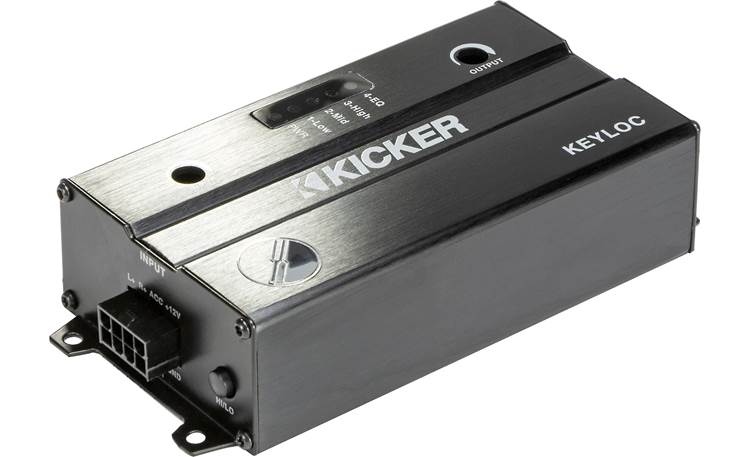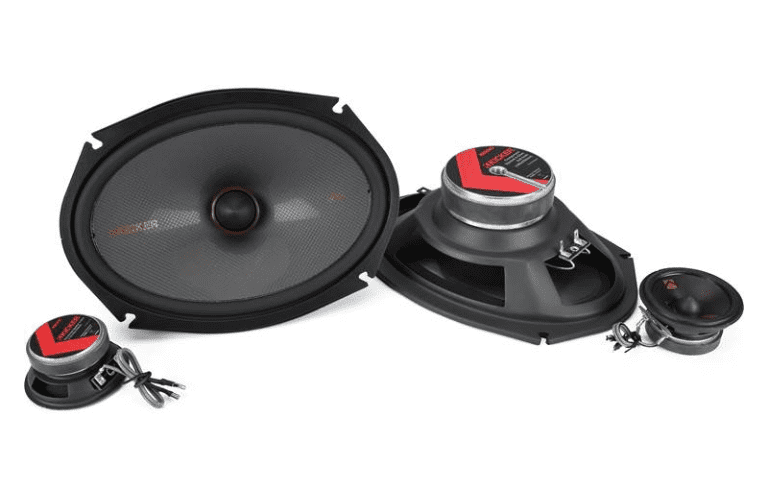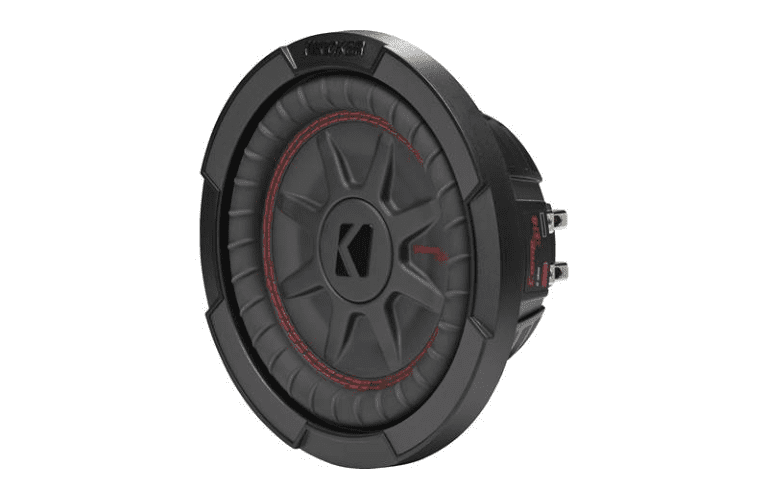Kicker’s KEYLOC Smart Line-Out Converter solves the challenges of integrating aftermarket audio components with factory systems that can’t be replaced or bypassed. It automatically detects the frequency range of the speaker wiring you connect to, so you’ll know if you’re tapping into a full-range signal or not. Then, it engages factory EQ correction to produce a flat response for your aftermarket system.
After installation, you download test tones and tracks from Kicker to use for signal identification and restoration. The device’s KEY button gets you into the automatic programming and set-up modes, where you use four different Kicker files to analyze the factory signal and restore full-range sound, while blinking LEDs indicate what’s happening.
The KEYLOC can correct factory systems that have one speaker purposely wired out of phase (usually the front passenger side) to create a 3D sound effect. You can also program it to pass low frequencies only when adding just a subwoofer to your system. Its compact size allows it to fit in most dashes, and Kicker’s FIT2™ technology with high-power speaker-level inputs ensures compatibility with virtually any system.
Product Highlights
- 2-channel active line output converter with DSP processing
- Automatic frequency response detection (RTA)
- Automatic factory EQ correction (DE-EQ)
- Manual programming includes an all-pass option to remove factory phase issues
- 2 speaker-level inputs with up to 400 watts RMS power handling
- 2 preamp-level outputs (up to 10V)
- Output gain controls
- 12-volt turn-on lead output
- Radio-Detect function prevents “No Speakers Detected” messages
- Compatible with virtually all factory systems
Package Contents
- DSP-controlled line-output converter (2 ch.)
- 10″ 8-pin harness
- Four 10mm screws
- Quickstart guide
- Kicker Tech Support information





